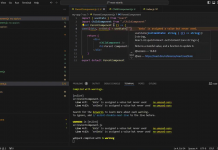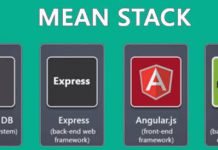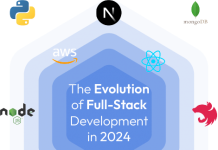In the dynamic landscape of web development, staying abreast of the latest trends is crucial for success. As we step into 2024, Node.js continues to be a powerhouse, and several trends are poised to shape the ecosystem. Let’s delve into 10 major Node.js development trends that are set to fuel success in the coming year.
1. JavaScript Everywhere
Node.js has long been associated with server-side JavaScript. In 2024, this trend is set to intensify as full-stack JavaScript development becomes even more prevalent. The synergy between Node.js and frontend frameworks like React and Vue.js ensures a seamless, unified development experience, simplifying code maintenance and boosting developer productivity.
2. Serverless Architecture Takes Center Stage
The paradigm shift towards serverless computing is undeniable, and Node.js is at the forefront of this revolution. Platforms such as AWS Lambda and Azure Functions are gaining traction, allowing developers to focus solely on writing code without the hassle of server management. Expect Node.js to play a pivotal role in the serverless landscape, unlocking new possibilities for scalable and efficient applications.
3. GraphQL Integration for Enhanced APIs
GraphQL, known for its flexibility in fetching only the required data, continues to reshape how APIs are designed. In 2024, Node.js is expected to play a key role in facilitating GraphQL integration. This trend empowers developers to create more efficient and tailored APIs, optimizing data retrieval and enhancing overall application performance.
4. Microservices Architecture Flourishes
The modular nature of Node.js makes it an ideal choice for microservices architecture. As organizations embrace a more distributed approach to development, Node.js facilitates the creation and management of microservices, promoting scalability, maintainability, and agility in application development.
5. Enhanced Security Measures
With the increasing frequency and sophistication of cyber threats, security remains a top priority for developers. Node.js is anticipated to adopt and evolve security measures, including improved authentication protocols, encryption standards, and vulnerability scanning tools. This focus on security will be pivotal in ensuring the robustness of Node.js applications.
6. Machine Learning Integration
The intersection of Node.js and machine learning is set to expand in 2024. Developers can harness the power of machine learning libraries seamlessly within Node.js applications, opening up new possibilities for intelligent applications and data analysis. This trend aligns with the growing demand for AI-driven solutions across various industries.
7. Real-Time Applications with WebSockets
Node.js has long been favored for real-time applications, thanks to its event-driven architecture. In 2024, this trend will persist as Node.js continues to be the go-to choice for building applications requiring real-time communication, such as chat applications, online gaming platforms, and collaborative tools.
8. JAMstack Adoption
As the JAMstack architecture gains popularity, Node.js remains a cornerstone in the development of decoupled, scalable, and secure web applications. Expect to see increased adoption of JAMstack principles, with Node.js powering the serverless functions and backend services in this architecture.
9. DevOps and CI/CD Integration
Efficient DevOps practices and continuous integration/continuous deployment (CI/CD) pipelines are essential for delivering high-quality software rapidly. Node.js, with its vibrant ecosystem and package management through npm, seamlessly integrates into DevOps workflows, supporting agile development and deployment practices.
10. Community-Driven Innovation
The Node.js community has always been a driving force behind its evolution. In 2024, the community is expected to continue fostering innovation through collaboration, open-source contributions, and the development of new tools and frameworks. This collective effort ensures that Node.js remains at the forefront of technological advancements.
In conclusion, embracing these Node.js development trends in 2024 positions developers and organizations for success in an ever-evolving digital landscape. Whether you’re building scalable APIs, real-time applications, or serverless functions, Node.js proves to be a versatile and powerful ally in crafting the next generation of web solutions. Stay tuned for an exciting year of innovation and growth in the Node.js ecosystem!
Master Your Coding Skills with BootSelf AI
If you're looking to enhance your coding abilities and upskill in artificial intelligence, look no further than the BootSelf AI app. This innovative platform provides AI-based coding lessons that are tailored to your individual learning pace.
Available on both iOS and Android, you can download the BootSelf AI app and start mastering coding skills today:













